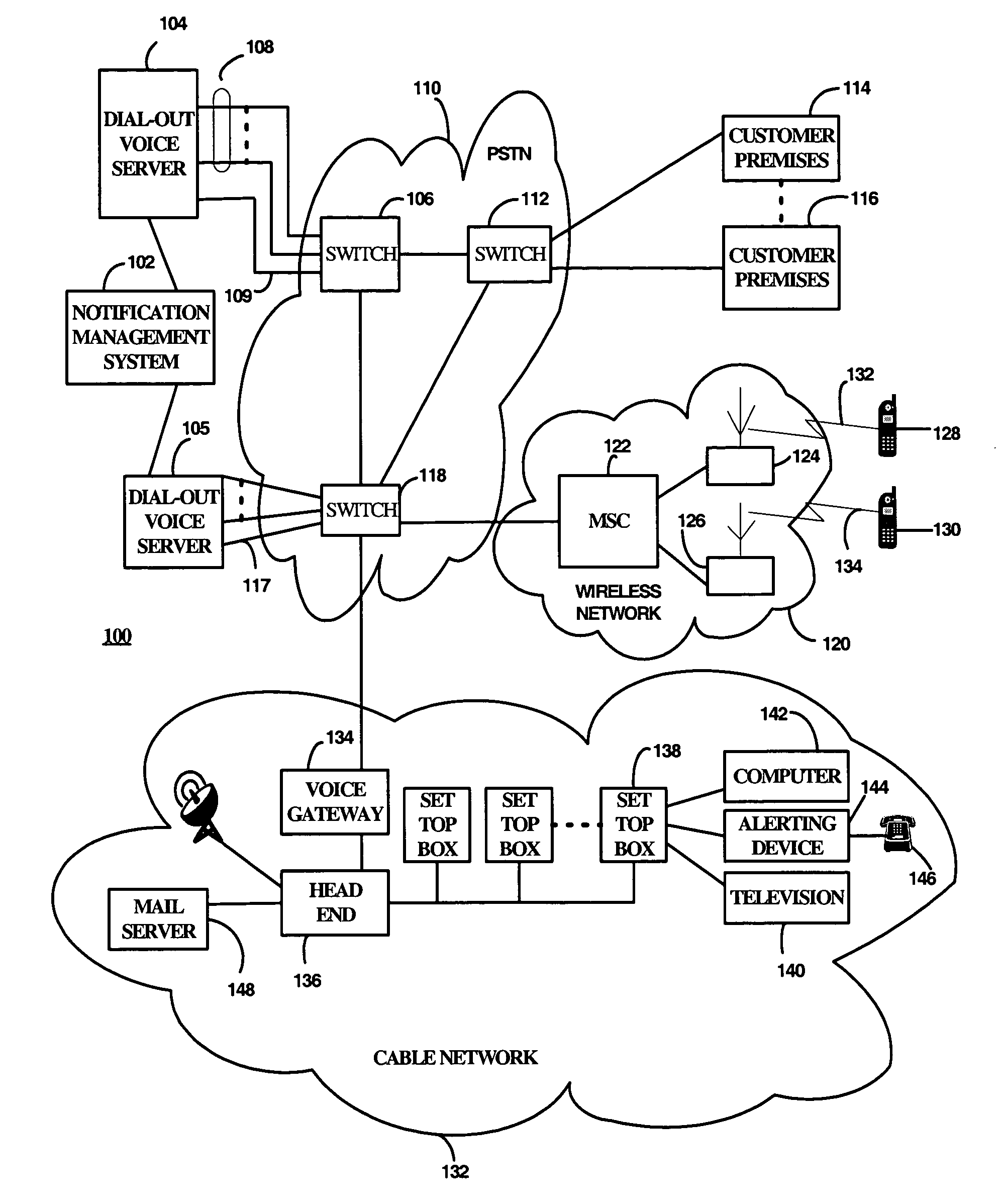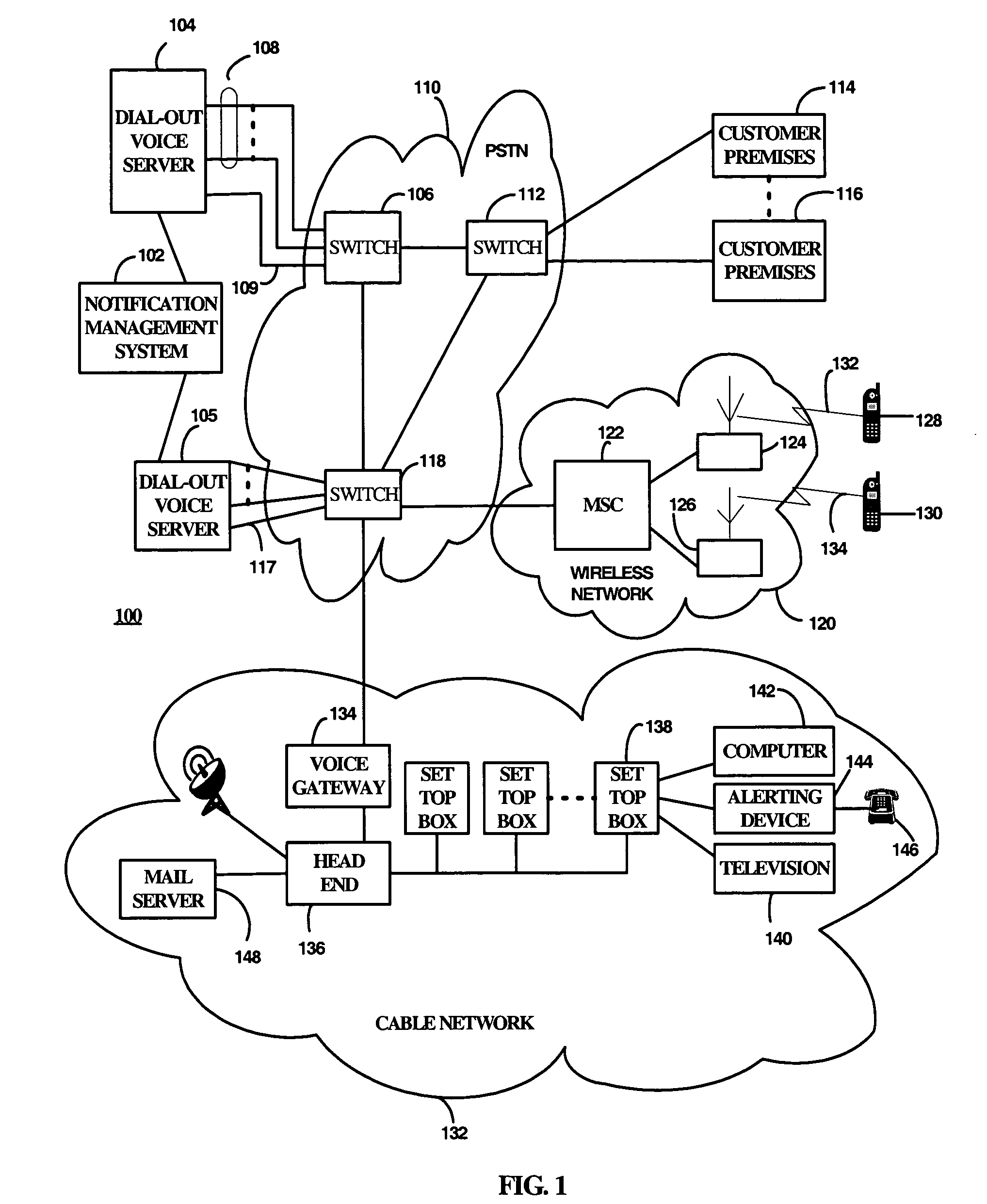Dial-out voice notification system
a technology of automatic telephone dialing and voice notification, applied in the field of telecommunication systems, can solve the problems of affecting the delivery performance of dialing voice notification systems, slow delivery of messages, and inability to deliver messages in this manner, and achieve the effect of quick delivery of a relatively large amount of conten
- Summary
- Abstract
- Description
- Claims
- Application Information
AI Technical Summary
Benefits of technology
Problems solved by technology
Method used
Image
Examples
Embodiment Construction
[0034]FIG. 1 shows a block diagram of a network 100 in which the present invention may be implemented. The network includes a notification management system 102 with which a user interacts in order to initiate and control the dial-out voice notification service. Under user control, the notification management system 102 identifies the telephone numbers of the target population and distributes the telephone number lists and the pre-recorded voice message to one or more dial out voice servers, such as dial-out voice servers 104 and 105. The notification management system 102 may be implemented as an appropriately programmed computer, and the details of the configuration of the notification management system are not required for an understanding of the principles of the present invention. The notification management system 102 may be directly connected to the dial out voice servers, or may be connected via a data network (e.g., local area network, wide area network, etc.). Dial-out voi...
PUM
 Login to View More
Login to View More Abstract
Description
Claims
Application Information
 Login to View More
Login to View More - R&D
- Intellectual Property
- Life Sciences
- Materials
- Tech Scout
- Unparalleled Data Quality
- Higher Quality Content
- 60% Fewer Hallucinations
Browse by: Latest US Patents, China's latest patents, Technical Efficacy Thesaurus, Application Domain, Technology Topic, Popular Technical Reports.
© 2025 PatSnap. All rights reserved.Legal|Privacy policy|Modern Slavery Act Transparency Statement|Sitemap|About US| Contact US: help@patsnap.com



